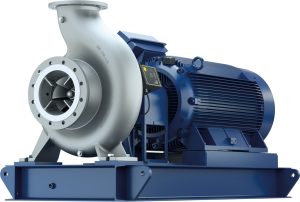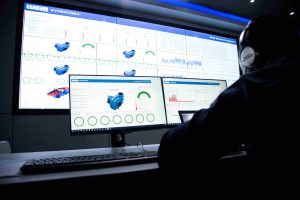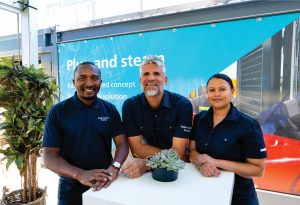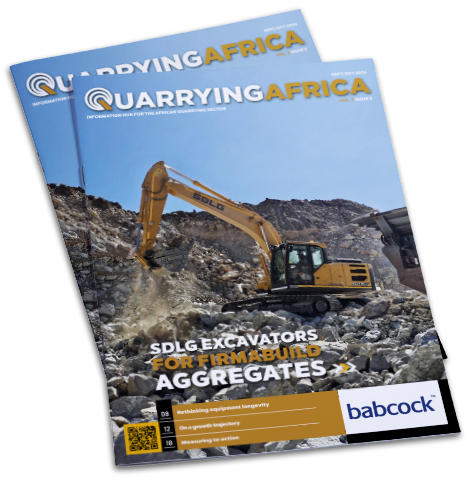As quarrying and mining operations continue to drive their digitalisation efforts in the quest to enhance operational efficiency and increase productivity, it is important to remember that sensors are the basis for success in digitalisation and automation.
In a one-on-one with Quarrying Africa, Clint Viviers, technical product specialist at VEGA Instruments SA, a leading sensor and measuring instrument manufacturer, says the point of measurement is where process control starts. Without measuring devices, says Viviers, trends such as digitalisation automation would not be possible.
“Before automation came to the fore, manual systems were the order of the day. Operators, for example, would open and close valves, start and stop pumps and conveyors manually,” says Viviers. “With the advent of automation, manual processes are a thing of the past. However, it is important to remember that measuring devices are a major part of the automation journey. Given that digitalisation and automation offerings are generally reliant on sensors, the first step for quarries and mines is to ensure that they have reliable measuring devices.”

Different technologies
In the instrumentation world, there are several technologies available, including level and pressure transmitters, as well as nucleonics, flowmeters and analytical, amongst others. However, VEGA specialises in a smaller basket of these technologies – level, pressure and nucleonics – which has allowed the company to be at the forefront of cutting-edge advancements in its chosen domain.
In fact, VEGA is one of the leading manufacturers of level measurement technology in the world, mainly for solid material applications. However, the company also offers liquid measurement solutions, for example, level detection in water tanks used for dust suppression at quarries.
VEGA’s pressure measuring techniques can be used to measure not only process or differential pressure, but also level, volume, density or mass flow in all areas of process technology. The measuring ranges of pressure transmitters start at a few millibar and extend to extreme pressures up to 1 000 bar. Different measuring cells are used in these pressure instruments.
VEGA offers a wide range of nucleonic level detectors. The product range includes radiation-based sensors for continuous level measurement, radiation-based sensors for density measurement and radiation-based sensors for mass flow determination.
In addition, there are various communication protocols for integrating these measuring devices into process control systems. The 4 to 20 mA signal, says Viviers, is the most common protocol used for communication between the measuring devices and a programmable logic controller (PLC). Other communication protocols include the HART Protocol, one of the first ever to be developed, as well as the Profibus, Foundation Fieldbus and Modbus.
“We also offer a wireless communication protocol in instances where measuring points are remote or where it is difficult to run cables due to a difficult access to a measuring point in the plant, for example. In addition, copper cable theft is a concern in our local market, thus mines often opt for wireless options,” explains Viviers.

Flagship products
While VEGA offers a wide range of cutting-edge measurement solutions, Viviers believes that the company’s non-contact radar level sensors have revolutionised level measurement in industrial processes.
In non-contact level measurement with radar, the sensor sends microwave signals towards the medium from above. The surface of the medium reflects the signals back in the direction of the sensor. Using the received microwave signals, the sensor determines the distance to the product surface and calculates the level from it. Liquids and solids are commonly measured with this measuring technique.
“What sets these sensors apart is their non-contact measurement technique. Unlike traditional measurement methods, such as float switches or magnetostrictive sensors, VEGA’s radar sensors do not come in direct contact with the process medium. This eliminates the risk of sensor wear, clogging, or deterioration, ensuring long-term reliability and reducing maintenance costs,” explains Viviers.
One of the primary advantages of VEGA’s non-contact radar level sensors is their exceptional accuracy and reliability. These sensors employ cutting-edge technology that allows them to overcome challenges posed by erratic process conditions, such as temperature variations, foam, or dust. With an accuracy of up to ±2 mm, customers can trust these sensors to consistently provide accurate measurements.
VEGA’s non-contact radar level sensors incorporate advanced signal processing capabilities that allow them to filter out interferences caused by noise and dust. This ensures that level measurements are precise and accurate, even in the presence of obstacles. Additionally, these sensors can also automatically compensate for heavy build-up on the sensor antenna, thanks to the software capabilities.
In the quarrying environment, VEGA’s non-contact sensors can be used for level measurement and point level detection in crushers and for level measurement of stockpiles. Rock crushing is a very demanding operation. The extremely noisy and dusty conditions inside a rock crusher make it difficult to obtain reliable, accurate readings with ultrasonic or laser level sensors, which are better suited to other applications. With solutions such as the VEGAPULS 6X non-contact radar sensor, quarries can ensure reliable level measurement in the crusher, unaffected by strong dust generation and noise.
The VEGAPULS 6X new radar level sensor combines the best of the previous 80 GHz, 26 GHz and 6 GHz sensors, such as VEGAPULS 64 and VEGAPULS 69, in one device. One of the most important innovations in the VEGAPULS 6X is its radar chip, designed and developed by VEGA. At the sensor’s heart is the pulsating technology that empowers it to fulfil the high expectations in terms of precision and reliability. This is mainly thanks to its ability to self-diagnose during operation, which makes it possible to monitor the accuracy and performance of the sensor seamlessly and continually.

Support matters
As a sensor and measuring instrument manufacturer, VEGA has been developing innovative measurement technology for over 60 years and is represented in over 80 countries by subsidiaries and sales partners. For nearly 30 years, the South African subsidiary has established a wide sales footprint in all major mining destinations across Africa.
“One of our key strengths is our closeness to our customers. While most of the cross-border countries such as Botswana, Mozambique, Zimbabwe and Botswana are supported from our South African headquarters, we have dedicated personnel in markets further north, such as Nigeria, Côte d’Ivoire and the Democratic Republic of Congo (DRC), amongst others. In future, the plan is to at least have dedicated personnel in each African country within our jurisdiction,” concludes Viviers.





